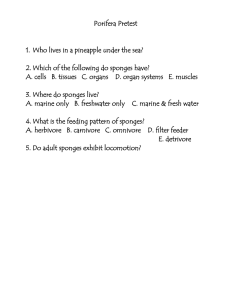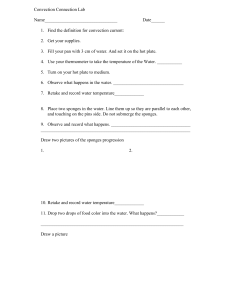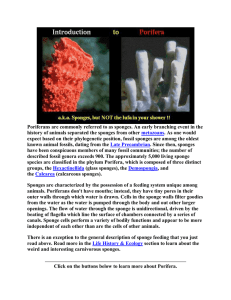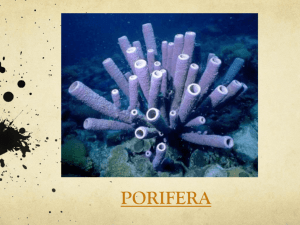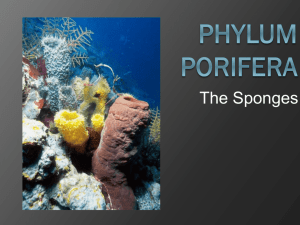Sponges
advertisement
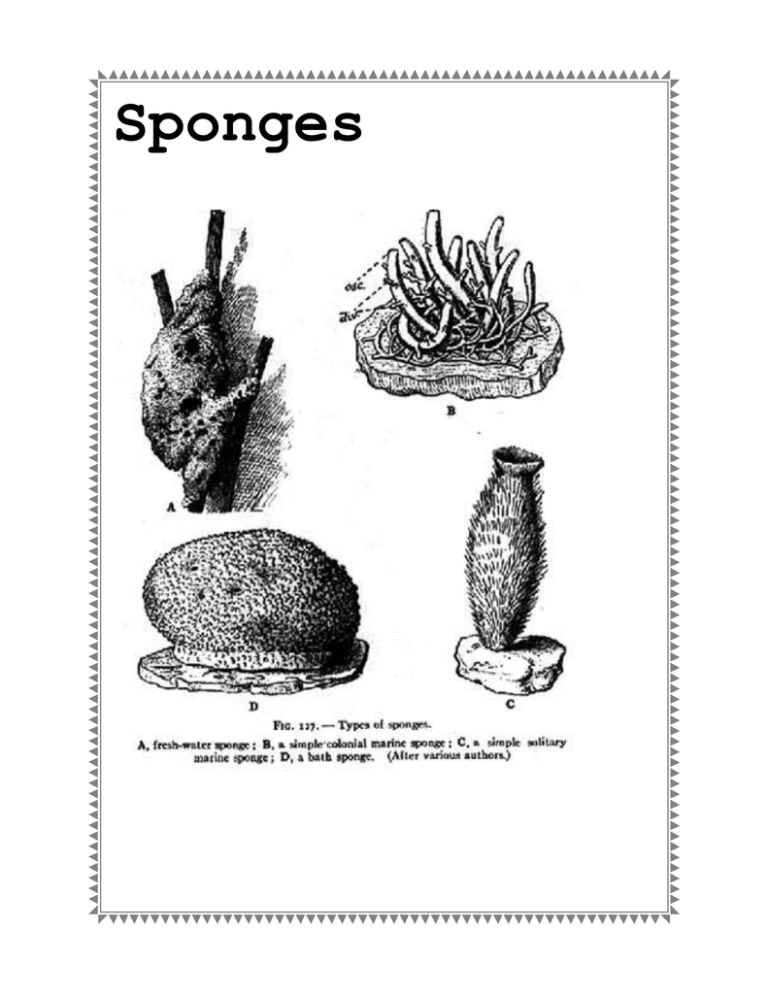
Sponges Sponge Anatomy Facts About Sponges: 1. Belong to the Phylum “Porifera”. 2. They are sessile. 3.They are very simple organisms, made up of undifferentiated cells. 4. They a. b. c. have 2 layers: endoderm- inner ectoderm- outer mesenchyme- jelly like substance in between layers 5. Sponges are filter feeders. They sift through the water for plankton: a. Ostia- pores through which water comes in b. Osculum- opening through which water passes out c. Collar Cells (choanocytes)- have flagella that sweep water into and out of the sponge. They line the inside of the sponge. 6. Sponges reproduce asexually: a. budding b. regeneration 7. Sponges can reproduce sexually: a. hermaphroditic (have both M+F sex organs) b. secrete sperm into the water, sperm enters the sponge via currents, fertilizes the eggs and the larvae drop to the bottom. 8. Sponges have great commercial value and are harvested by divers. 9. Sponges are considered Benthic, bottom dwelling. 10. Sponges are hardy, and are found in both sea and freshwater, in warm and cold waters. 11. Sponges are naturally elastic and can be made of a network of elastic protein fibers called spongin, or of hard material called silica or calcium carbonate (glass sponges). 12. Because they grow over the surfaces of hard substrate they are called “encrusting” organisms.
